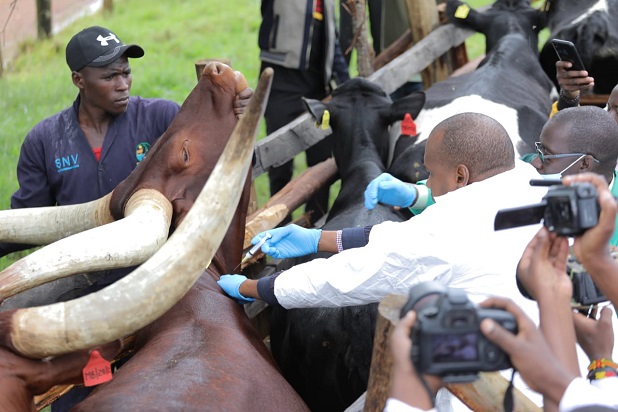Potato is a popular crop in Uganda with great potential for income generation and improving nutrition so much so that the Ugandan government has declared potato a key crop for the country.
National Agriculture Research Organization (NARO) in partnership with International Potato Center (CIP) have released and promoted improved varieties of Irish potato and sweet potatoes aimed at boosting production and incomes of the intended beneficiaries.
The current production of potatoes in Uganda standing at approximately 300,000 Metric tons according to Alex Barekye, a Potato expert from NARO is however not revealing the growth potential for potatoes in Uganda.
In an interview with Business Focus, he revealed that currently farmers are producing an average of 7 metric tons per hectare, but adds that with improved varieties and best farming practices, they could go up to 40 metric tons per hectare.
“From my perspective, I see potatoes changing lives in Uganda, With the profits from potato, farmers can afford to build new homes. They use potato as a food security crop for their families. Nationally, potato has played a significant role in feeding rising urban populations. The market is growing.” said Barekye, who specializes in crop breeding.

While poor agronomic practices and declining fertility are perennial challenges to potatoes in Uganda, Barekye says the true obstacle is Late Blight disease, which can damage between 40-60% of a harvest. Furthermore, he said that farmers who spray to prevent late blight often do so without proper personal protective gear, thus exposing themselves to fungicides.
“At the moment, purchase and frequent use of expensive fungicides is the only protection available to farmers. However, it’s costly and the application of fungicides is time consuming and backbreaking work. Carrying a 30kg container to spray their field is drudgery,” he said.
But Barekye, with assistance from CIP, NARO is working on a solution to late blight by developing a potato variety with natural resistance to the disease known as the Victoria potato.
Through biotechnology tools, NARO and CIP have developed a new version of the Victoria variety by adding three resistance genes (3R). Barekye and his colleagues have tested this 3R Victoria variety, which is showing complete resistance to late blight in field trials which he said will wipe out the disease.

He said that that before the variety is released to the market, they are waiting replication and examination by Uganda regulatory agencies.
Late Blight is caused by the fungus Phytophthorainfestans. The late blight fungus is especially adapted for growth under conditions where water is present and cool temperatures persist. Temperatures ranging from approximately 50 to mid 90soF will enable disease progression in the field
Currently, 300,000 metric tons of potato are produced each year in Uganda, where farmers earn market prices ranging between 33-50 cents per kilogram (or USD 1,500-2,000 per hectare) depending on the season.
Roughly 60% of the country’s potato crop is grown in the southwestern highlands (above 1,800m) that border with Rwanda and Congo. Another 20% is grown in the eastern part of the country around Mt. Elgon. Farmers can grow two crops of potato per year, except in the southwest where farmers have an additional season from July to September.
By Drake Nyamugabwa






How can one get that victoria hybrid
Reply via my email
Thanks